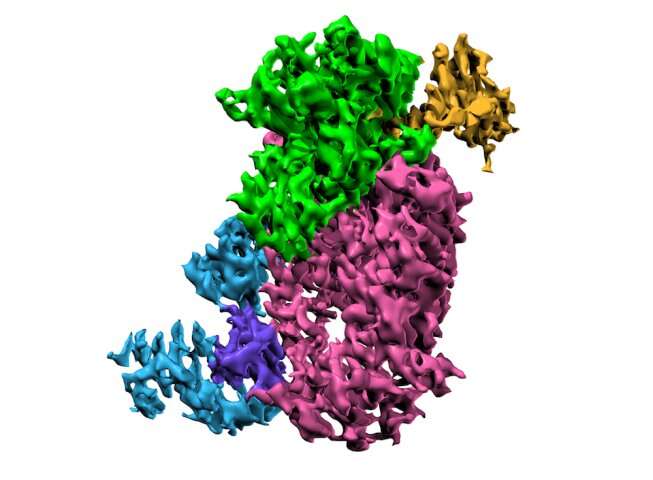Viral cover-up: SARS-CoV-2 cap offers new target for antivirals

An investigation into how SARS-CoV-2 camouflages itself from cells has unmasked a potential vulnerability in the virus that scientists hope to exploit.
Biochemist Vincent Tagliabracci's lab has delineated key steps by which SARS-CoV-2, the virus responsible for COVID-19, disguises one end of its genome. Without this cover-up, the virus can no longer hijack cells to cause an infection. The research team described their work, which has not yet been peer-reviewed, in a preprint posted on bioRxiv.org on February 9, 2022.
"If we could develop an inhibitor against this camouflage process, that would represent a new way to target the virus," says Tagliabracci, a Howard Hughes Medical Institute Investigator at the University of Texas Southwestern Medical Center.
A handful of antiviral medications to treat SARS-CoV-2 infection, including remdesivir, molnupiravir, and nirmatrelvir, are currently used in hospitals and clinics. In some cases, doctors can combine multiple antivirals to pack a stronger punch, though having additional options can come in handy should a virus become resistant to one drug.
To fight COVID-19 over the long term, Tagliabracci says, "we are going to need a combination of antiviral drugs that work in different ways."
SARS-CoV-2's genome is composed of RNA, a molecular cousin of DNA. During an infection, the virus sneaks past human cells' defenses and tricks them into manufacturing more viruses. SARS-CoV-2 uses several strategies to perpetrate this subterfuge, including covering one end of its RNA with a chemical cap, like a spy slipping on a wig. It's no coincidence that this covering is identical to the one atop human mRNA, which contains the cell's protein-making instructions. With a cap in place, SARS-CoV-2 can trick the cell into assembling viral proteins as if they were its own. While researchers already knew that the virus depends on its protective cap, they didn't know how it donned this disguise.
Tagliabracci's lab studies what he calls "weird kinases," odd members of a large family of enzymes crucial to many processes within the cell. Over the last 35 years, kinases have emerged as important drug targets for disease. Once scientists decoded SARS-CoV-2's genome, his team combed through it looking for kinases, regular or strange. Within the code for a large multifunctional protein, they recognized a kinase-like enzyme, known as the NiRAN domain.
Building on earlier research, Tagliabracci's team, including graduate students Gina Park and Adam Osinski, pieced together the steps the NiRAN domain takes to move viral RNA into place before adding the cap. When they interfered with NiRAN's ability to do its job, SARS-CoV-2 could not multiply inside human cells, the team found.
Given the NiRAN domain's status as an unconventional kinase relative, Patrick Eyers, a kinase biochemist at the University of Liverpool, is optimistic about the prospects for new antivirals. "Kinases are really fantastic drug targets, not just in human cells but in any disease where a kinase is involved," says Eyers, who was not part of the study. Scientists have years of experience creating drugs that alter kinase activity in cancer and inflammatory conditions, he says.
Viral RNA capping had already attracted the attention of researchers seeking new means to fight not only COVID-19, but other viral infections, says Warner Greene, a virologist at Gladstone Institutes, who was not involved in the research. But scientists have not yet had success. The primary challenge is that human cells also cap their mRNA, so interfering with the virus could have unintended consequences. Tagliabracci's team has shown that the steps SARS-CoV-2 takes to cap its genome are performed by viral proteins, "which make them legitimate targets," Greene says. "But you've got to be darn sure there is no spillover onto the host proteins that carry out the same steps."
The work to identify a new antiviral based on Tagliabracci's lab's discovery has already begun. His team is now searching for small molecules that interfere with the virus's capping mechanism—without hindering human cells.
More information: Gina J. Park et al, The mechanism of RNA capping by SARS-CoV-2 (2022). DOI: 10.1101/2022.02.07.479471
Provided by Howard Hughes Medical Institute




















